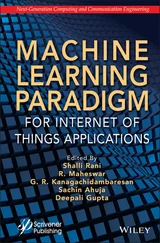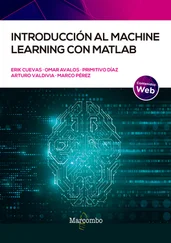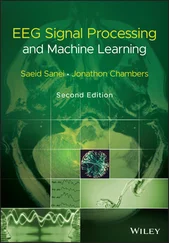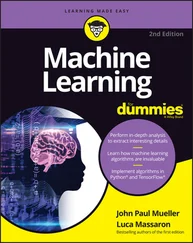1.4.5 Protection Policy Providers
Protection strategy suppliers are the elements that pay clinical costs to an approach holder as a by-product of their month to month premiums. Protection strategy suppliers can be private insurance agencies or government administrated medicinal services offices counting operators and intermediaries. Almost no examination has been led with respect to misrepresentation submitted by protection strategy suppliers as most protection extortion information are conveying the suppliers. It is assessed that around $85 billion are lost yearly due misrepresentation submitted by insurance agencies [15]. Exercises including Insurance Strategy Providers may include:
✓ Filing illegal return on the service statement by paying too little,
✓ Insurance companies resort to unfair means and do not accept the legally endorsed documents and thus discourse the policy holders to the extent that the patients ultimately give up [15],
✓ Deny the claims without examining them appropriately [15],
✓ Forcing the client to pay an exorbitant premium by providing them with wrongly interpreted information [15],
✓ Extract exorbitant premium by selling counterfeit policies.
Among these four kinds of misrepresentation talked about over, the specialist organizations alone submit most of the misrepresentation. Albeit most specialist organizations are dependable, those couple of unscrupulous specialist organizations submit misrepresentation and account the failure of thousands and thousands of dollars to the human services framework. At times, more than one of the above mentioned types is engaged with submitting human services misrepresentation. Identifying misrepresentation in such a half and half cases can be unpredictable and testing [16]. Henceforth, it is pressing that analysts find compelling approaches to find examples and connections in information that might be utilized to make a substantial forecast about false cases. Because of this squeezing demand, high end information mining and AI procedures holds a guarantee to give refined devices to distinguish potential indicators that portray the false practices dependent on the chronicled information [16].
1.5 Fraud Detection and Data Mining in Healthcare
Data mining method is used to distinguish misrepresentation and maltreatment in human services framework. The immense amounts of information created by human services insurance agencies are hard to process and assess utilizing traditional strategies. Data mining gives the strategies and mastery to change over these stores of information into the valuable assortment of realities for dynamic [18]. This sort of investigation has become important, as money-related weight has expanded the prerequisite for social insurance enterprises to develop decisions dependent on the investigation of financial and clinical information. Data and investigations acquired through information mining can improve working effectiveness, decline expenses, and increment benefits while safeguarding a high level of care.
The information mining applications for the most part build up standards for identifying extortion and misuse. At that point, these applications recognize irregular patters of cases by facilities, research centres, and doctors. Alongside different subtleties, these information mining applications can give data about strange referrals, remedies, clinical claims and fake protection claims. Data mining procedures can be arranged into administered strategies and unaided techniques.
1.5.1 Data Mining Supervised Methods
Supervised method uses labeled data. In this case the models are trained to use these data. The sole objective of the supervised ML method is to train the model in a manner such that it can predict the outcome when it is provided with some new set of data. This method can be used in particular case where both inputs and the corresponding outputs are known. The important feature of this method is that it provides the most accurate results. We can categorize supervised ML into regression problem and classification problem. This method is not considered to be close to true Artificial intelligence because the model is first trained for each available data, and then it predicts the correct outcome. Supervised ML includes various algorithms i.e., Linear Regression, Support Vector Machine, Multi-class Classification, Decision tree, Bayesian Logic, etc.
1.5.2 Data Mining Unsupervised Methods
In unsupervised Data mining systems, independent procedures don’t get any objective yield or focal points from their natural variables. In spite of the fact that it is hard to envision how a machine can be prepared with no reaction from its surroundings, these techniques function admirably. It is probably going to assemble a legitimate model for individual learning techniques bolstered on the possibility that the component’s point is to utilize input portrayal to predict imminent information, adequately communicating the contribution to another system, dynamic, etc. It very well may be said that solo learning can discover designs in an information which can likewise be unstructured clamor. Bunching and dimensionality decrease are the exemplary instances of unaided learning [20]. The benefit of using supervised techniques over unsupervised is that once the classifier has been trained, it can be easily utilized on any same kind of datasets [21] which settles on it a most ideal decision for a misrepresentation identification program which includes screening and observing. In this part, we just consider directed machine learning methods and give a top to bottom review of their application in identifying extortion in the social insurance framework.
1.6 Common Machine Learning Applications in Healthcare
Here are multiple and endless Machine learning applications in healthcare industry. Some of the most common applications are cited in this section. Machine learning helps streamlining the administrative processes in the hospitals. It also helps mapping and treating the infectious diseases for the personalized medical treatment. Machine learning will affect physician and hospitals by playing a very dominant role in the clinical decision support. For example, it will help earlier identification of the diseases and customize treatment plan that will ensure an optimal outcome. Machine learning can be used to educate patients on several potential disease and their outcomes with different treatment option. As a result it can improve the efficiency hospital and health systems by reducing the cost of the healthcare. Machine learning in healthcare can be used to enhance health information.
1.6.1 Multimodal Machine Learning for Data Fusion in Medical Imaging
Clinical picture combination method is a valuable and huge strategy to examine infections by getting the reciprocal data from various multimodality clinical pictures. These methodologies have been reliably and continuously applied in clinical practice. Multimodal picture examination and group learning methodologies are growing quickly and conveying noteworthy motivating force to clinical applications. Driven by the on-going accomplishment of applying these learning methodologies to clinical picture taking care of, specialists have proposed algorithmic structure to regulate multimodal picture examination with cross-system blend at the part learning level, classifier level, and at the dynamic level too. By then structure an image division system subject to significant convolutional neural frameworks is executed to shape the wounds of fragile tissue sarcomas using multimodal pictures, including those from appealing resonation imaging, enlisted tomography, and positron release tomography. The framework arranged with multimodal pictures shows better execution stood out to frameworks arranged from single-particular pictures.
Читать дальше












